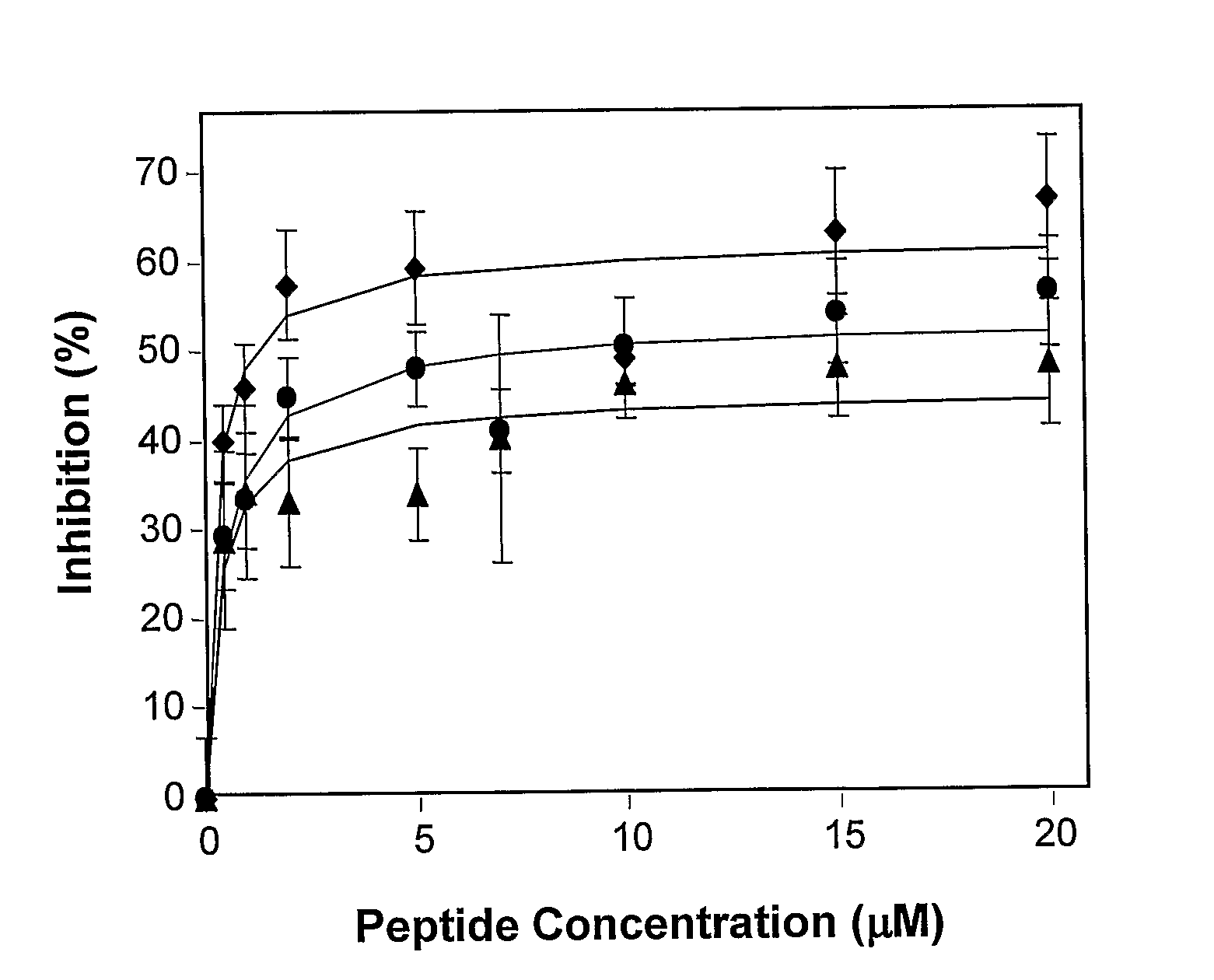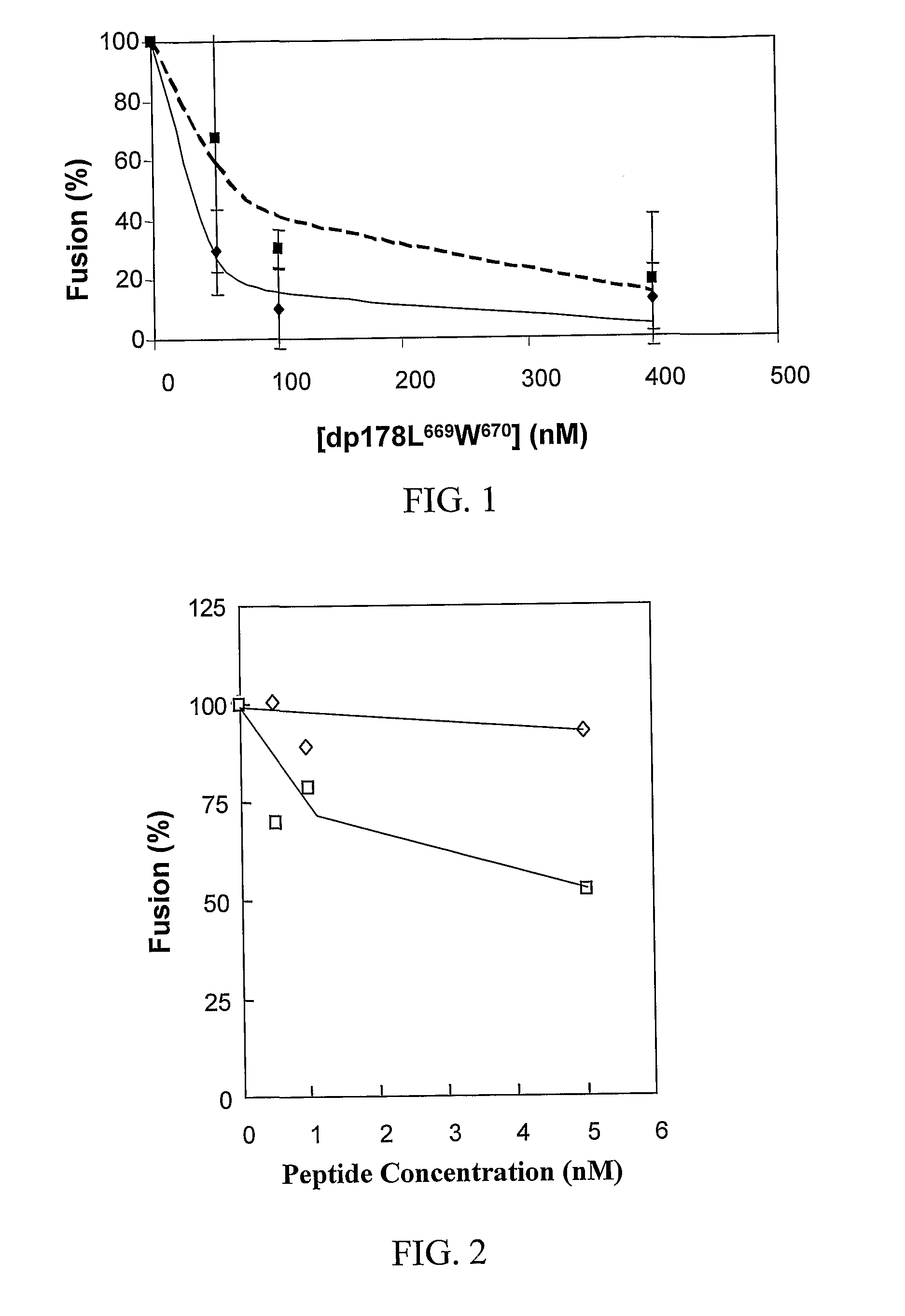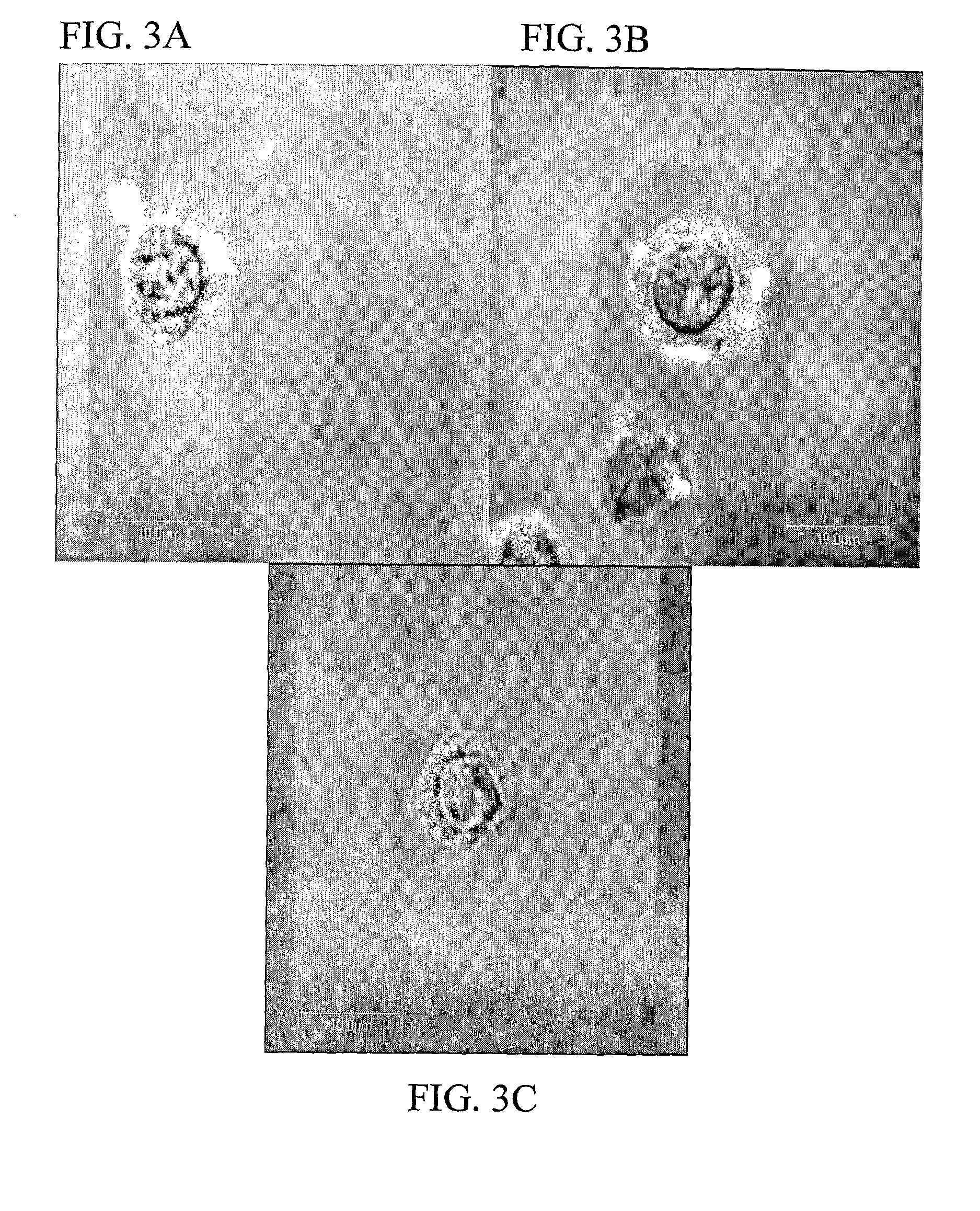Diastereomeric Peptides Useful as Inhibitors of Membrane Protein Assembly
- Summary
- Abstract
- Description
- Claims
- Application Information
AI Technical Summary
Benefits of technology
Problems solved by technology
Method used
Image
Examples
example 1
DP178 Diastereomer
Peptides Synthesis
[0104]DP178 diastereomeric analogs were synthesized by using the Boc chemistry described by Merrifield et al. (Merrifield, R. B., et al., 1982, Biochem. 21: 5020-5031). Peptides were cleaved from the resins by HF, precipitated with ether and then purified by reverse-phase HPLC on an analytical C18 Vydac column 4.6 mm×250 mm (pore size of 300 Å). The peptides were eluted by a linear gradient of 25-80% acetonitrile in water containing 0.05% TFA (v / v), at a flow rate of 0.6 ml / min for 80 minutes. Concentrations were measured by tryptophan and tyrosine absorbance (at 280 nm) in 8M Urea.
Dye Transfer Fusion Assay
[0105]Peptide inhibition of cell-cell fusion was assayed by monitoring the redistribution of two fluorescent probes: a water-soluble probe and a lipophilic probe, between target and effector cells upon their co-incubation with these probes (Munoz-Barroso I., et al., 1998, J. Cell Biol. 140: 315-323). The HIV-1 gp120-41 expressing TF228 cells (Jo...
example 2
HIV-1 Fusion Peptide Diastereomer
[0113]We have synthesized a diastereomeric peptide, representing the N-terminal 33 segment of gp41 of HIV-1 (LAV1a) in which four D-amino acid residues IFFA were incorporated. The peptide has the following amino acid sequence:
AVGIGALFLGFLGAAGSTMGARSMTLTVQARQL(SEQ ID No: 5)
Results
Inhibition of Cell-Cell Fusion Induced by the Wt-Fusion Peptide and its Diastereomeric Analog
[0114]The diastereomeric and the wild type peptides were tested for inhibitory effect on HIV-1 mediated cell-fusion as described herein above (Example 1). The diastereomer exhibited significant inhibitory effect already at a concentration of 10 ng / ml (FIG. 2). An 8-mer N-terminal region of the fusion peptide was used as a control for the specificity of HIV-1 inhibition. This control peptide was completely devoid of inhibitory effect, suggesting that the inhibition of the diastereomeric analog of the fusion peptide is specific for HIV-1. It should be indicated that the inhibition exert...
example 3
[0118]Glycophorin A (GPA) has a known homodimerization motif, the core of which is GxxxG. Previous results demonstrated that the GPA transmembrane domain can dimerize in an achiral manner, while preserving wild type like structure and interactions (Gerber, D., et al., 2002, J. Mol. Biol. 322: 491-495). In order to understand the role of the helical secondary structure in the assembly process, a diastereomeric analog (herein designated 2D-GPA) of the GPA transmembrane domain was synthesized. Two L-valines at positions 80 and 84 according to the 1AFO pdb structure, each following a glycine in the GxxxG motif, were replaced by their D-enantiomer. The amino acid sequence of the diastereomeric peptide of GPA is as follows:
ITLIIFGVMAGVIGT(SEQ ID NO: 11)
[0119]Glycines are known to be a weak point for helices and together with the replacement of the large β-branched valines by their D-enantiomer, they are bound to form a large disturbance in the secondary structure...
PUM
 Login to View More
Login to View More Abstract
Description
Claims
Application Information
 Login to View More
Login to View More - R&D
- Intellectual Property
- Life Sciences
- Materials
- Tech Scout
- Unparalleled Data Quality
- Higher Quality Content
- 60% Fewer Hallucinations
Browse by: Latest US Patents, China's latest patents, Technical Efficacy Thesaurus, Application Domain, Technology Topic, Popular Technical Reports.
© 2025 PatSnap. All rights reserved.Legal|Privacy policy|Modern Slavery Act Transparency Statement|Sitemap|About US| Contact US: help@patsnap.com



